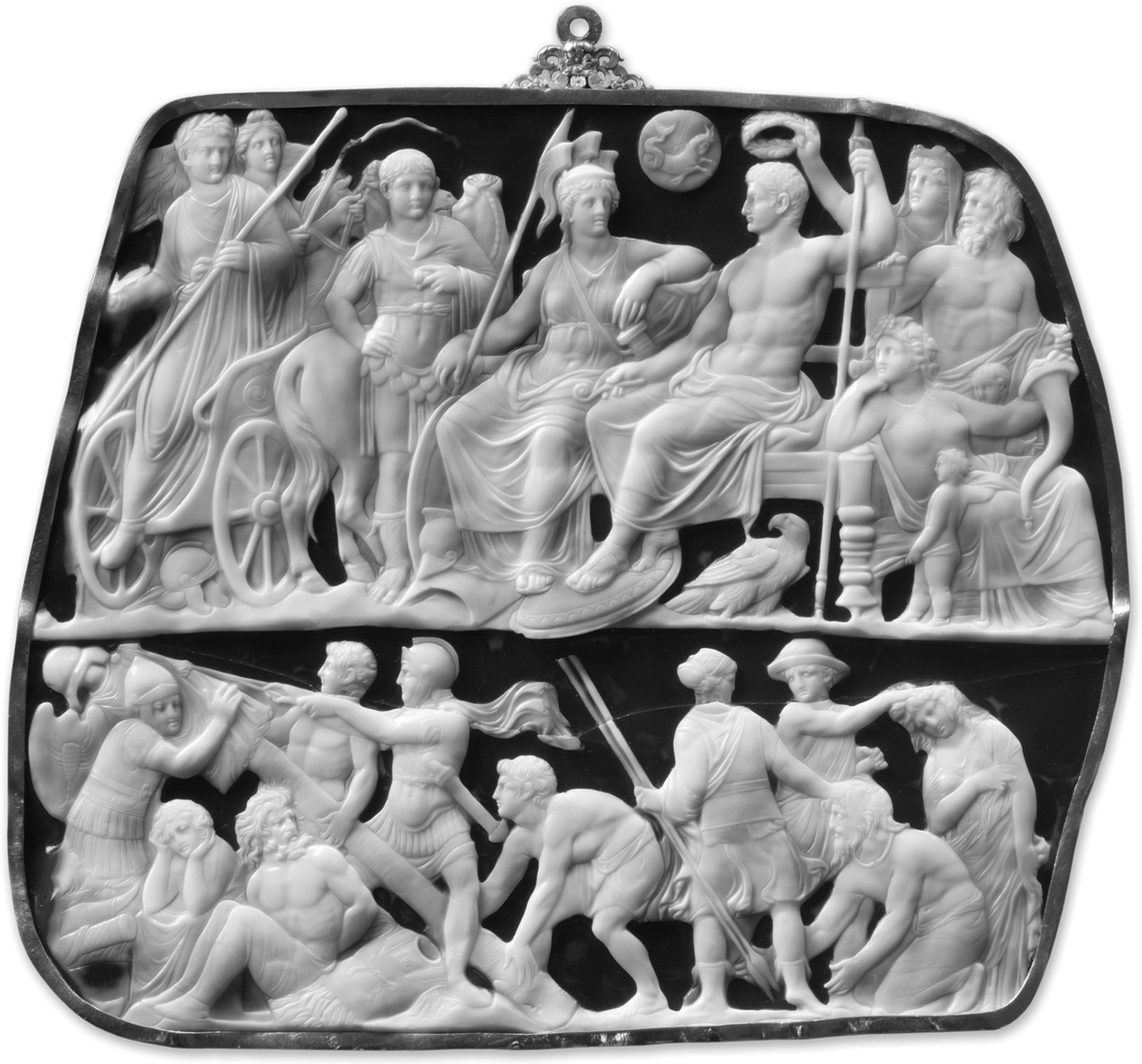Seeing History: The Symbolism of Augustus as Ruler of the World

Approximately eight to nine inches long on each side, this cameo was carved by an artist in the time of the early Roman Empire from a stone with dark blue and white layers. There are no words inscribed on the cameo to label the figures or explain the context of the scenes. Scholars reason that the seated man with a bare chest is Augustus, who is being given a crown by a veiled female figure, who probably represents a personification of the Inhabited World. She is honoring the first emperor of Rome for having saved Roman citizens, especially by leading victorious wars against national enemies. The superb physical condition of Augustus’s upper body and the long scepter he holds symbolize his position as a heroic, indeed divine-like ruler. The small circle above, perhaps representing a celestial body, shows his astrological sign, signaling that he was destined for his role as Rome’s ruler.
The lower panel shows some soldiers dominating captured foreigners, identified as non-Romans by their hairstyles and clothing, while other soldiers erect the traditional kind of victory monument—called a trophy, meaning “turning point”—that Roman armies put up on the battlefield to mark the spot where they had begun to force the enemy to retreat.
The woman wearing a decorative helmet and with a spear seated to the left of Augustus is probably his wife Livia; her appearance resembles that of Juno (the Greek Hera), the queen of the gods, or of Minerva (the Greek Athena), the armored warrior goddess of wisdom. This iconography emphasizes Livia’s loving partnership with her husband in guiding and protecting the Roman people. The younger man stepping down from a chariot at the far left in the upper panel is most likely Tiberius, the natural son of Livia and adopted son of Augustus. He was designated by Augustus as his choice to succeed him as “first man” (princeps), the name that Augustus gave to his position as ruler to express his self-identification with the democratic traditions of the Roman republic, in which citizens voted to elect officials and decide government policies, while masking the reality that he in fact ruled with the monarchical power of an emperor.
Question to Consider
What do you think is the connection between the two scenes sculpted in the cameo in terms of justifying the rule of Augustus?